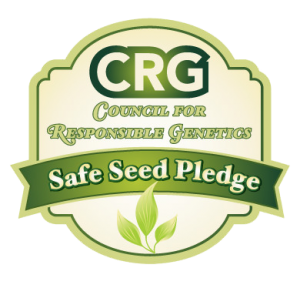Growing Eggplant

Eggplant is a tender vegetable that is related to the tomato in almost as many shapes and colors. The bushes grow up to 2 1/2 feet tall with hairy gray-green leaves. The fruit varies is size, shape and color. Eggplants need warm soil and warm temperatures. Temperatures should remain above 68 degrees. Full sun is a must.
Planting
Plant after the ground has warmed and all danger of frost has passed. Cold soil will shock the plant and set it back several weeks. Eggplants don’t need or like much fertilizer, so don’t don’t overdo it. It’s a good idea to fertilize again when buds or tiny eggplants appear, but keep it light.
Eggplants are suitable for growing in large containers or tubs. Container growing will help prevent soil borne disease and the soil in pots tends to stay warmer than the ground which helps eggplant produce fruit sooner. It is also a good idea to use small tomato cages as support for eggplants and even peppers because when heavy with fruit, they can break branches in windy conditions.
Harvesting
Your eggplants will taste best when young. Start harvesting when the fruits reach 1/3 their full growth. They are ready once the skins turn glossy. Once the outside skin turns dull they are past their prime and will contain lots of seeds. Cut the stems with a sharp knife to prevent damage to the vine.
Pests and Diseases
Eggplant is a delicacy for insects especially flea beetles. Here in the Southern United States, it’s not unusual to set out transplants, and find that two days later the leaves look like lace. It’s a good idea to spray with Neem II spray when transplanting. Also watch for Japanese Beetles. While light infestations are frequent, prolonged damage by these insects will eventually kill the plant.



